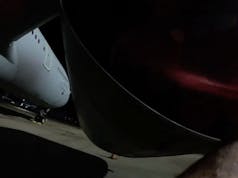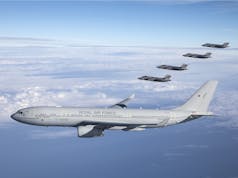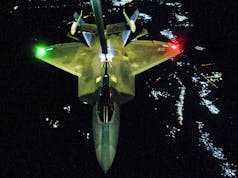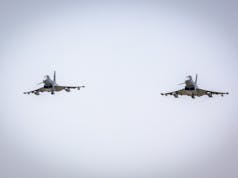The 46-year old patient was flown from the Orkney Islands to the Queen Elizabeth University Hospital in Glasgow by an Atlas A400M transport aircraft carrying a critical care team.
The incident was not related to the coronavirus pandemic stress the Royal Air Force.
The RAF say that the emergency flight was scrambled from RAF Brize Norton, Oxfordshire, on Saturday morning when the critically sick patient’s condition deteriorated further. The patient was flown from Kirkwall to Glasgow and transferred to the Queen Elizabeth University Hospital in the city.

An RAF spokesperson said:
“The NHS called on the Royal Air Force when the patient’s condition started to deteriorate and became life-threatening. They needed more specialist care. Using the Atlas (A400M) rather allowed a medical team to treat the patient during the 40-minute flight.”
The patient had been hospitalised in Kirkwall where doctors took the decision to transfer him when they assessed there was “a risk to life”.
“This is the second medical evacuation by the RAF from the Scottish islands, on March the 22nd an RAF Atlas flew a critically ill patient from the Shetland Islands to intensive care in Aberdeen.
The Atlas A400M entered service with the RAF in 2014 and is ideally suited to the evacuation role. At a top speed of over 500 miles per hour it can carry 37 tonnes over a distance of 2,000 nautical miles up to 40,000 feet. It can land and take off from semi-prepared airfields, small landing strips and even beaches.”











I hope the patient recovers. This makes me wonder about life on the Islands.
But would this not be done normally by a different aircraft or a helicopter.
The virus epidemic I guess may be making life difficult for say the Aberdeen Hospital so it has gone to Glasgow. But I would have been thinking the opposite.
The problem for helicopters is distance. The round trip distance from the Orkney’s to Glasgow is 446 miles. So if we did the trip in a Puma with an average cruise speed of 150mph, it would take just under 3 hours (2.97) flight time. The Puma would also need to refuel before the return flight, so add on another 30 minutes. The distance to the Orkney’s from Brize Norton is 492 miles. If the A400 travels at an average of 500mph it will take just under an hour to get there and it doesn’t need refuelling to get to Glasgow. Further the A400 was prepped with a full emergency team compete with the necessary support equipment. The Puma would struggle to get all that support equipment plus a doctor and nurse aboard. The distance from the airport to the hospital is just over 10 miles, which can be done quickly in an ambulance.
I imagine the predominant reason for using the A400 is space for the critical care team to treat the patient
Yes, the aircraft is fitted out for the Medical Emergency Response Team (MERT) role. This will include the full medical equipment needed for a crash team. They can also handle a number of patients at the same time. I know the Chinooks are also rolled in the same way, basically the same as used in Afghan. It can’t be emphasised enough how critical it is to provide ICU support whilst in transit. The larger aircraft can carry the full MERT personnel, unlike a Puma.
Thank you for the answers.
I am all for transferring these patients. And Orkney population is small. I am curious about how often, and the A400 very new, so what happened in “olden times”.
I think you already know the answer to that question.
C130 used to do it